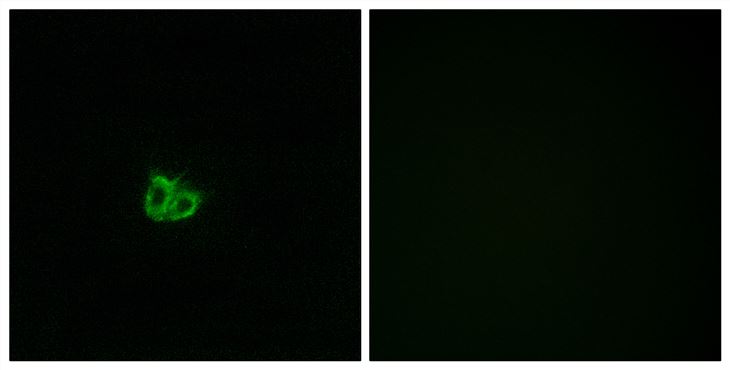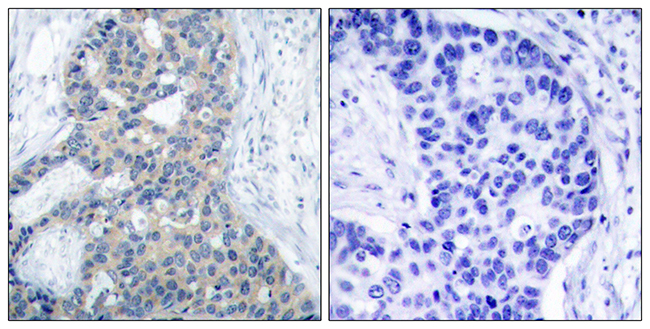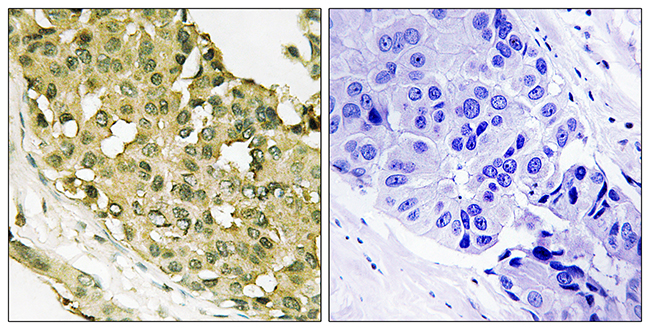Conventional endometrioid adenocarcinomas of the endometrium recurring as clear cell tumors: comparative immunohistochemical analyses
ANNALS OF DIAGNOSTIC PATHOLOGY
Authors: Rawish, Kojo R.; Desouki, Mohamed M.; Crispens, Marta A.; Fadare, Oluwole
Abstract
Endometrial carcinomas are known to have the potential for recurrences that are distinctly discordant at the morphologic and immunophenotypic levels from their antecedent primary tumors. This report describes 3 patients with stage I, low or intermediate grade, conventional endometrioid carcinomas that recurred at the vaginal apex as notably clear cell-rich, higher grade, histotypically ambiguous neoplasms. Comparative immunohistochemical analyses were performed on all cases on both the original and the recurrent tumors using a panel of 8 biomarkers, including estrogen receptor, progesterone receptor, vimentin, p53, p16, hepatocyte nuclear factor 1 beta, BAF250a (ARID1A), and stathmin or oncoprotein-18 (STMN1). Notable immunophenotypic differences (relative to the original tumor) in case 1 included the relative loss of vimentin and estrogen receptor and the acquisition of p53, p16, and STMN1 expression in the recurrence. In case 2, significant p16 and STMN1 expression were identified only in the recurrence. In case 3, there were no significant immunophenotypic differences between the original tumor and the recurrence. In all 3 cases, the recurrent and original tumors showed no significant differences in BAF250a, hepatocyte nuclear factor 1 beta, and progesterone receptor expression. In summary, our cases confirm that endometrioid carcinomas can recur as clear cell-rich tumors. The relative acquisition of STMN1 expression in 2 of the 3 recurrences and p53 overexpression in 1 of 3 recurrences suggests that this phenomenon represents a form of tumor evolution, and this may be a potential contributor to tumor progression in these patients. (C) 2013 Elsevier Inc. All rights reserved.
RNA sequencing-based microRNA expression signature in esophageal squamous cell carcinoma: oncogenic targets by antitumormiR-143-5pandmiR-143-3pregulation
JOURNAL OF HUMAN GENETICS
Authors: Wada, Masumi; Goto, Yusuke; Tanaka, Takako; Okada, Reona; Moriya, Shogo; Idichi, Tetsuya; Noda, Masahiro; Sasaki, Ken; Kita, Yoshiaki; Kurahara, Hiroshi; Maemura, Kosei; Natsugoe, Shoji; Seki, Naohiko
Abstract
Aberrantly expressed microRNAs (miRNAs) disrupt intracellular RNA networks and contribute to malignant transformation of cancer cells. Utilizing the latest RNA sequencing technology, we newly created the miRNA expression signature of esophageal squamous cell carcinoma (ESCC). A total of 47 miRNAs were downregulated in ESCC tissues, and these miRNAs were candidates for antitumor miRNAs in ESCC cells. Analysis of the signature revealed that several passenger strands of miRNAs were significantly downregulated in ESCC, e.g.,miR-28-3p,miR-30a-3p,miR-30c-3p,miR-133a-3p,miR-139-3p,miR-143-5p, andmiR-145-3p. Recent studies indicate that some passenger strands of miRNAs closely involved in cancer pathogenesis. In this study, we focused on both strands of pre-miR-143, and investigated their antitumor roles and target oncogenes in ESCC. Ectopic expression ofmiR-143-5pandmiR-143-3psignificantly attenuated malignant phenotypes (e.g., proliferation, migration, and invasive abilities) in ESCC cell lines. We revealed that six genes (HN1,HMGA2,NETO2,STMN1,TCF3, andMET) were putative targets ofmiR-143-5pregulation, and one gene (KRT80) was a putative target ofmiR-143-3pregulation in ESCC cells. Our ESCC miRNA signature and analysis strategy provided important insights into the molecular pathogenesis of ESCC.
![]()


